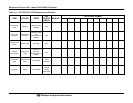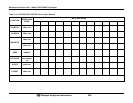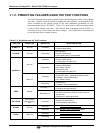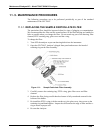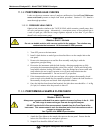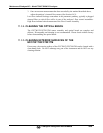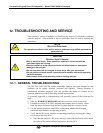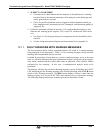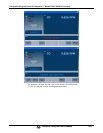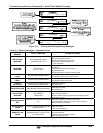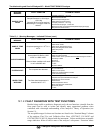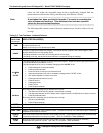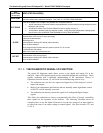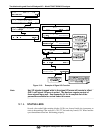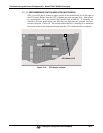
Troubleshooting and ServiceTeledyne API – Model T300/T300M CO Analyzer
Teledyne Analytical Instruments 250
4. SUSPECT A LEAK FIRST!
Customer service data indicate that the majority of all problems are eventually
traced to leaks in the internal pneumatics of the analyzer or the diluent gas and
source gases delivery systems.
Check for gas flow problems such as clogged or blocked internal/external gas
lines, damaged seals, punctured gas lines, a damaged / malfunctioning pumps (if
equipped), etc.
5. Follow the procedures defined in Section 12.5 to confirm that the analyzer’s vital
functions are working (power supplies, CPU, relay PCA, touchscreen, PMT cooler,
etc.).
See Figure 3-6 for the general layout of components and sub-assemblies in the
analyzer.
See the wiring interconnect diagram and interconnect list in Appendix D.
12.1.1. FAULT DIAGNOSIS WITH WARNING MESSAGES
The most common and/or serious instrument failures will result in a warning message
being displayed on the front panel. Table 12-1 lists warning messages, along with their
meaning and recommended corrective action.
It should be noted that if more than two or three warning messages occur at the same
time, it is often an indication that some fundamental analyzer sub-system (power supply,
relay board, motherboard) has failed rather than an indication of the specific failures
referenced by the warnings. In this case, a combined-error analysis needs to be
performed.
The analyzer will alert the user that a Warning message is active by flashing the FAULT
LED, displaying the the Warning message in the Param field along with the CLR button
(press to clear Warning message). The MSG button displays if there is more than one
warning in queue or if you are in the TEST menu and have not yet cleared the message.
The following display/touchscreen examples provide an illustration of each:




